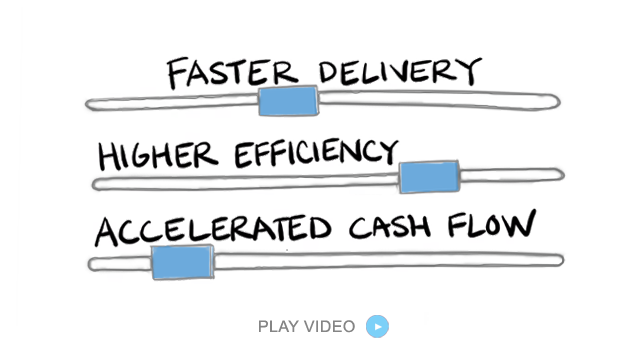Proactive or Reactive? The Strategic Edge for Purchasing Managers in Pharmaceutical Manufacturing
In pharmaceutical manufacturing, the role of a Purchasing Manager goes beyond cost negotiations and supplier relationships. It’s about maintaining a delicate balance between availability, compliance, and cost—all while aligning procurement activities with fast-paced production demands and ever-evolving regulatory landscapes.
In this high-stakes environment, the question arises: should purchasing decisions be proactive or reactive? And more importantly, how can technology—especially tools like PlanetTogether APS integrated with SAP, Oracle, Microsoft, Kinaxis, or Aveva—enable purchasing leaders to shift from fire-fighting mode to forward-thinking strategy?
Let’s explore the implications of both approaches and why the proactive path, powered by smart integration, is the key to unlocking efficiency, resilience, and competitive advantage in pharma manufacturing.
The Reactive Trap: A Common Scenario in Pharmaceutical Procurement
Many Purchasing Managers in the pharmaceutical space are familiar with the following scenario:
A sudden spike in production due to a large order or regulatory change.
Raw material stockouts due to unforeseen supplier delays.
A panicked rush to source components, often leading to expedited shipping, inflated costs, or risky quality compromises.
This is the reactive procurement cycle, where decisions are made in response to crises rather than in anticipation of them. It’s not necessarily a sign of poor management—often, it's the result of limited visibility into production schedules, supply chain disruptions, or changes in regulatory requirements.
The consequences of reactive purchasing can include:
Higher procurement costs due to expedited orders
Production delays and downstream bottlenecks
Compromised quality or compliance risks
Poor supplier performance management
Reduced negotiation leverage due to time constraints
While reactive management might solve short-term issues, it sacrifices long-term stability and strategic growth.

Proactive Procurement: Building a Resilient and Agile Supply Chain
On the other hand, a proactive purchasing strategy equips pharmaceutical manufacturers with the agility and foresight needed to navigate uncertainty. It shifts the focus from "What do we need now?" to "What will we need next month, next quarter, or next year?"
A proactive approach involves:
Forecasting material demand in sync with production planning
Monitoring supplier performance and risks continuously
Building safety stock strategies that are optimized, not wasteful
Establishing flexible sourcing arrangements with backup suppliers
Leveraging integrated planning tools to anticipate disruptions
The goal is to reduce surprises—not just react to them faster.

Technology as the Enabler: Enter PlanetTogether APS
To move from reactive to proactive, visibility is key. That’s where Advanced Planning and Scheduling (APS) solutions like PlanetTogether play a pivotal role—particularly when integrated with your existing ERP or MES platforms like SAP, Oracle, Microsoft Dynamics, Kinaxis, or Aveva.
Here’s how this integration empowers proactive purchasing:
Real-Time Production Visibility
Challenge: Many purchasing teams operate independently from the production floor, relying on outdated or manual production schedules.
Solution with PlanetTogether + SAP (or Oracle/Dynamics):
With integrated APS, purchasing managers gain real-time access to production plans, BOM requirements, and capacity schedules. When production orders shift, purchasing is immediately alerted to changing material demands, allowing timely adjustments.
For example, an integration between PlanetTogether APS and SAP S/4HANA ensures that when a new product is prioritized, corresponding raw material requirements auto-populate into the purchasing module—no manual cross-checking needed.
Advanced Forecasting for Material Planning
Challenge: Pharmaceutical demand often fluctuates due to market changes, clinical developments, or seasonal spikes.
Solution with PlanetTogether + Kinaxis:
When integrated with Kinaxis RapidResponse, PlanetTogether leverages predictive modeling and demand sensing to create high-fidelity forecasts for production. Purchasing managers can align material orders accordingly—ensuring just-in-time availability without overstocking high-cost inventory like APIs or specialty excipients.
This integration allows scenario planning—“What if we double output of Drug A next quarter?”—and purchasing gets visibility into how that impacts raw material needs before decisions are finalized.
Supplier Management and Lead Time Optimization
Challenge: Long lead times, inconsistent supplier delivery, and geopolitical risks make pharmaceutical procurement volatile.
Solution with PlanetTogether + Microsoft Dynamics 365 SCM:
Purchasing managers can monitor supplier lead times and integrate historical data on reliability directly into the scheduling algorithm. If a supplier consistently ships late, the system adjusts planned delivery windows accordingly—proactively reducing risk.
This enables better supplier scorecards, more strategic sourcing decisions, and fewer surprises.
Cross-Departmental Collaboration
Challenge: Siloed communication between procurement, planning, quality, and production teams.
Solution with PlanetTogether + Aveva MES:
By connecting PlanetTogether APS with Aveva’s MES, purchasing decisions are aligned with batch execution, quality testing phases, and regulatory compliance checkpoints. This visibility ensures purchasing doesn’t order materials prematurely (leading to expiry issues) or too late (causing production halts).
It supports collaborative planning where QA, production, and procurement speak the same language.
Exception Management and Alerts
Challenge: Reacting too late to supplier disruptions or schedule changes.
Solution with PlanetTogether's Integration Capabilities:
With rules-based alerts, the system automatically flags procurement-related issues—low stock, late deliveries, production plan shifts—before they become emergencies. When connected to an ERP like Oracle, these alerts can also trigger automated workflows, like reordering from alternate suppliers or reprioritizing production.
Benefits of a Proactive Procurement Strategy Enabled by Integration
Reduced Stockouts and Delays: Align material availability with production timelines.
Cost Efficiency: Better supplier negotiations and less reliance on expedited shipping.
Improved Quality and Compliance: Fewer rushed orders reduce risk of sourcing lower-grade materials.
Greater Agility: Rapid response to market changes, recalls, or regulatory shifts.
Data-Driven Decision-Making: Insights from integrated systems support strategic sourcing.
Pharmaceutical manufacturing is too complex, too regulated, and too critical to rely on a reactive procurement model. For Purchasing Managers, the path to operational excellence lies in embracing a proactive strategy, supported by integrated, real-time planning tools.
With PlanetTogether APS integrated into platforms like SAP, Microsoft Dynamics, Oracle, Kinaxis, or Aveva, procurement becomes a strategic advantage—not just a cost center. It enables Purchasing Managers to anticipate needs, prevent problems, and contribute directly to production continuity, patient safety, and bottom-line results.
So, the next time you're faced with an urgent procurement challenge, ask yourself: was this avoidable? If the answer is yes, it’s time to explore how integration and planning can move your team from reactive firefighting to proactive excellence.
Ready to Modernize Procurement?
Discover how PlanetTogether’s integration capabilities can streamline procurement and empower proactive strategies in your pharmaceutical facility. Contact us to schedule a demo tailored for your ERP or MES environment.
Topics: PlanetTogether Software, Integrating PlanetTogether, Data-Driven Decision-Making, Improved Quality and Compliance, Cost Efficiency, Greater Agility, Pharmaceutical Manufacturing, Reduced Stockouts and Delays





















LEAVE A COMMENT